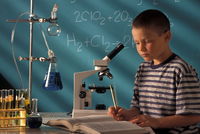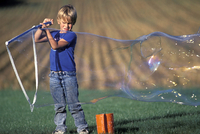By Jay Davidson

Historically, the United States has lagged behind many other nations in the instruction of science. With the increased use of technology in many people’s daily lives, this has been changing. Parents are in a position to encourage their children’s interest in many different areas of science. Let your curiosity and that of your children lead you to the area that has the greatest interest to you. Getting children to be curious about the natural world around them at an early age can lead them to science-related hobbies and jobs as they grow up.
Resources on the web:
- Cool Science for Cool Kids
- Science Made Simple
- Smithsonian Institute
- NASA Kid’s Club
- Scientific American
- Science Info
- How Stuff Works
- 365 Simple Science Experiments With Everyday Materials
- The New Way things Work
- The Planets in Our Solar System
- Earthways : Simple Environmental Activities for Young Children
- Janice Vancleave’s Biology for Every Kid
- Science Kits for Kids & Teen
Animals (including people)
Watch a spider in its web; observe the movements of the animals around you: dogs, cats, squirrels, rabbits, birds; observe birds in their nests and their habitats; watch a caterpillar spin its cocoon and wait until it transforms into a butterfly; look for animal tracks; observe the way ducks animals care for their young; visit the vet with your pet; observe the changes as a cut heals; ask to see x-rays at the doctor’s or dentist’s office; ask about the equipment that your doctor or dentist uses; observe the genetic similarities between generations in your family or friends.
Plants
Plant packaged seeds and observe them grow; plant seeds from fruit and vegetables that you eat; plant an acorn; learn the names of various types of trees and flowers; save waste food as compost; watch flowers bud and blossom; help care for trees and flowers in your environment; plant a tree and record its progress.
Weather

Look at the weather report on television or in the newspaper; pick a place and find its weather on the Internet; look at a map that has climate or weather zones; observe the sky at different times during the day; keep a thermometer inside and outside your house; fly a kite; ask people about the weather where they are when you send them email or speak to them on the phone; keep a graph or diary of weather conditions; talk about the weather with people who come from different climate zones; investigate the life of people who live in a different weather zone than you; collect rain in a container; gaze at a rainbow; count the time that takes place after lightning flashes and thunder crashes.
Chemical and physical properties
Experiment with what will sink or float in a large bucket of water; collect items in nature and sort them; see how long it takes for an ice cube to melt; draw on steamy bathroom mirrors or car windows; reflect light off mirrors; shine light through a crystal; balance objects on a seesaw; squirt food coloring into water; make bubbles; create your own musical instruments; sort spices by the different types of tastes; help with measuring and mixing with recipes; put glow-in-the-dark stickers on your child’s ceiling or wall.
Earth and space
Dig a hole in your yard or at the beach; name the different materials used to build houses and other buildings; read maps; make model cars, boats, and airplanes; go rock-hunting to see how many different ones you can find; notice the way the sun and moon move across the sky; watch a sunrise or sunset; keep track of the progress of space program satellites, launches, and missions; make a graph of the way the shape of the moon changes throughout the month; put rocks in a tumbler and see how they change; look at the stars when you are away from an area that has bright city lights.
Energy
Observe how your electric meter changes when you turn things on and off; recycle glass, metal, and paper around the house; visit a recycling site and a dump; play around with magnets on the refrigerator; learn how to use electrical tools in the kitchen, bathroom, and workshop; take apart old tools that have stopped working; find out how things work; figure out the mileage for the family’s car; figure out the differences in time for a trip you take on foot, by bike, in a car, or on a bus or train; see how far a ball will roll.
This article has been incorporated and expanded in Teach Your Children Well: A Teacher’s Advice for Parents This article is reprinted with the author’s permission.



